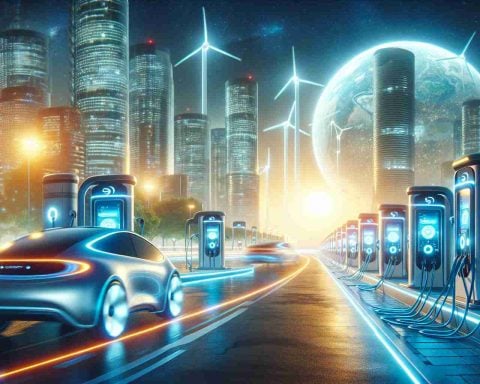In the race to propel electric vehicle (EV) technology into the future, a groundbreaking development has emerged that could redefine battery efficiency. A team of researchers from the University of Toronto has unveiled a new type of battery chemistry that promises to significantly extend the range, reduce charging time, and enhance the sustainability of electric cars.
Introducing Solid-State Lithium-Sulfur Batteries
The latest innovation in battery technology involves a shift from traditional lithium-ion to solid-state lithium-sulfur batteries. Unlike conventional batteries, these utilize a solid electrolyte instead of a liquid one, resulting in significant improvements in energy density and overall safety. The solid-state approach to lithium-sulfur batteries aims to overcome the notorious complexities associated with sulfur’s natural instability and poor conductivity.
A Leap Forward in Sustainability
One of the most compelling aspects of this breakthrough is its potential environmental impact. Lithium-sulfur batteries use materials that are more abundant and less environmentally damaging to extract than cobalt, which is commonly used in lithium-ion batteries. This not only reduces the ecological footprint but also lowers production costs, making EVs more accessible.
Fast Charging and Longer Range
The researchers claim that these new batteries can charge up to 80% in just 15 minutes and offer a range boost of up to 50%. This fast charging capability, combined with increased range, addresses two of the most significant barriers to widespread EV adoption: long charging times and limited driving distance.
This breakthrough in battery technology marks a crucial step toward making electric vehicles a more viable and sustainable alternative for the masses. As this technology moves towards commercialization, it could redefine the landscape of electric mobility.
Revolutionizing Electric Vehicles: How Solid-State Lithium-Sulfur Batteries Could Change the Game
The unveiling of solid-state lithium-sulfur batteries by researchers at the University of Toronto is set to transform the electric vehicle (EV) industry. This innovative battery chemistry could significantly enhance the efficiency and sustainability of EVs, addressing key areas that have long posed challenges to electric mobility.
Pros and Cons of Solid-State Lithium-Sulfur Batteries
Pros:
– Higher Energy Density: Solid-state lithium-sulfur batteries boast a higher energy density, which means they can store more energy in a lighter and smaller package compared to traditional lithium-ion batteries.
– Improved Safety: By replacing the liquid electrolyte with a solid one, these batteries reduce the risk of leaks and thermal runaway, thus enhancing overall safety.
– Environmental Benefits: The use of sulfur, which is more abundant and less environmentally damaging to extract than cobalt, lowers both the ecological footprint and production costs.
Cons:
– Manufacturing Challenges: The production of solid-state batteries can be technically complex, requiring advanced manufacturing capabilities.
– Material Instability: Sulfur’s natural instability and poor conductivity still present challenges that need to be fully addressed to achieve optimal performance.
Features and Specifications
– Charging Capability: Capable of reaching 80% charge in just 15 minutes, drastically cutting down time spent at charging stations.
– Range Extension: Offers a range boost up to 50%, mitigating the issue of limited driving distance faced by many current EVs.
Comparisons with Traditional Lithium-Ion Batteries
Compared to traditional lithium-ion batteries, solid-state lithium-sulfur options provide superior energy density and safety features. While lithium-ion batteries rely heavily on cobalt, which has supply chain risks and environmental concerns, the new technology leverages sulfur, a more sustainable alternative.
Use Cases and Market Impact
Solid-state lithium-sulfur batteries hold promise not only for personal vehicles but also for commercial fleets looking to reduce emissions and enhance sustainability. As these batteries approach commercialization, they could lead to a significant reduction in the cost of EVs, making them more accessible to the average consumer.
Trends and Predictions
Given the rapid advances in battery technology, solid-state lithium-sulfur batteries are positioned to play a pivotal role in the future of electric mobility. Experts predict increased investment and research in this area, leading to accelerated development and deployment in the coming years.
As this technology matures, it will be critical to monitor its integration into the market. The ongoing transition to more sustainable and efficient energy solutions signifies a turning point in our journey towards a cleaner and greener future.
For more insights into technological advancements and their implications, visit the University of Toronto to explore further developments.













